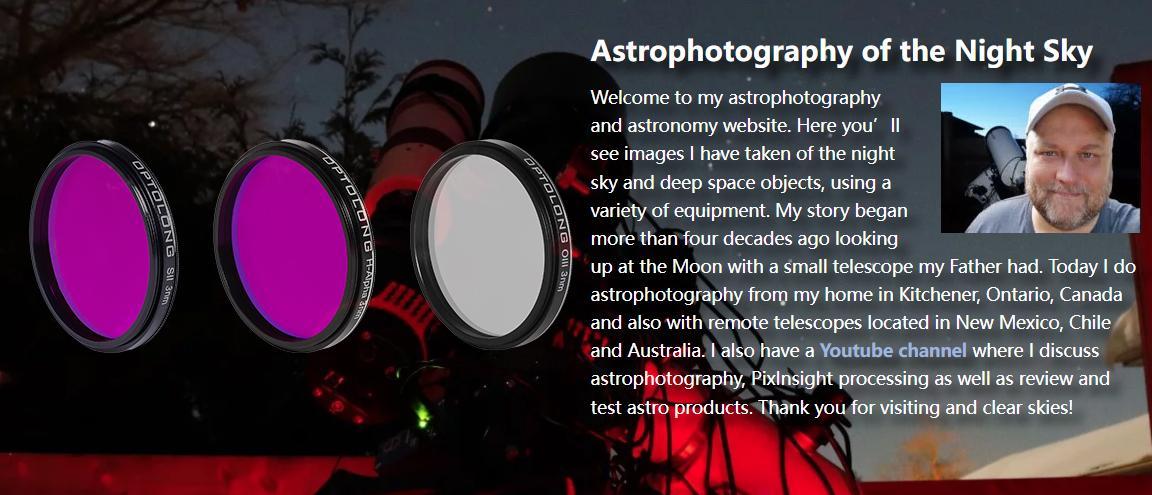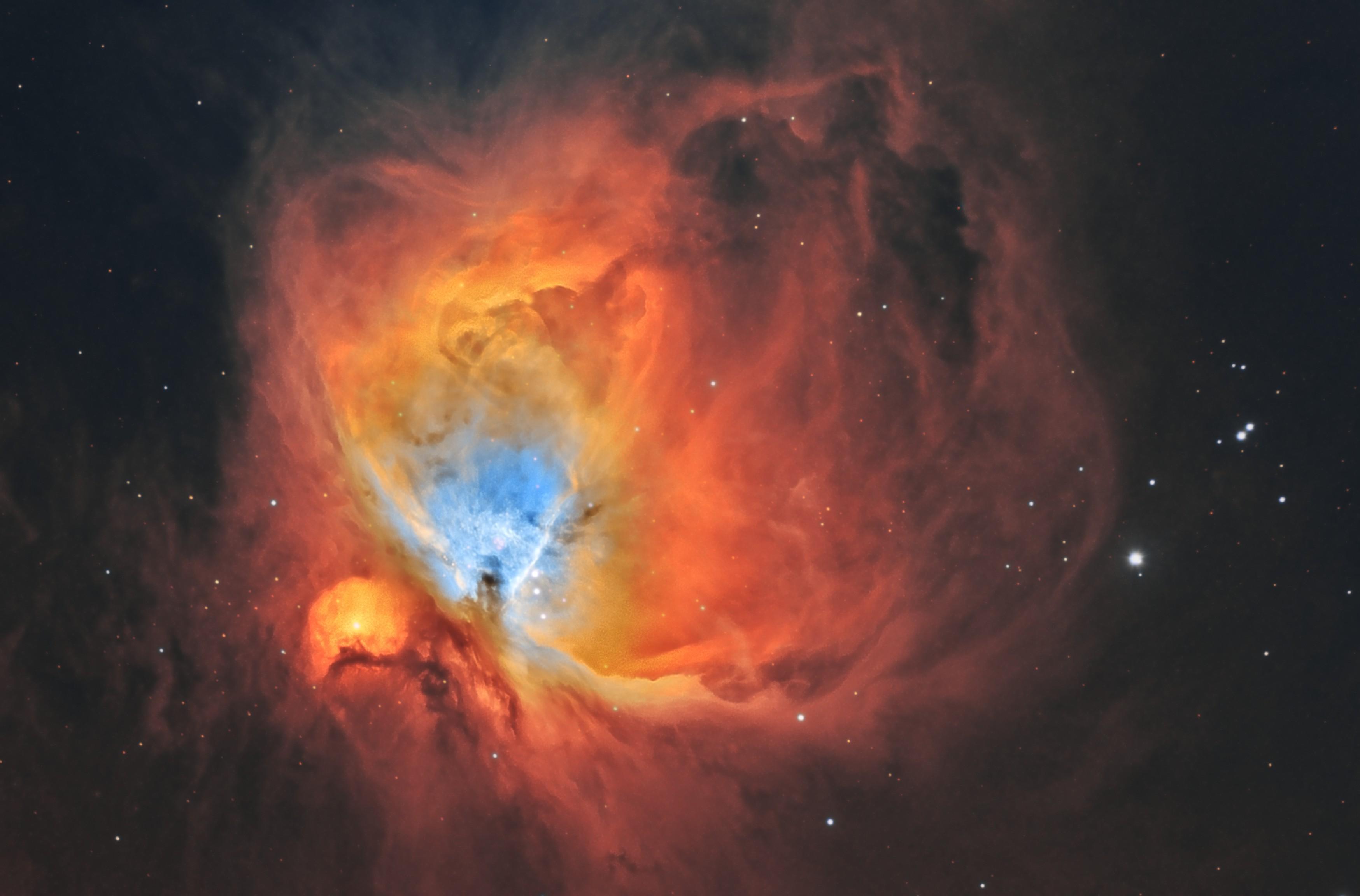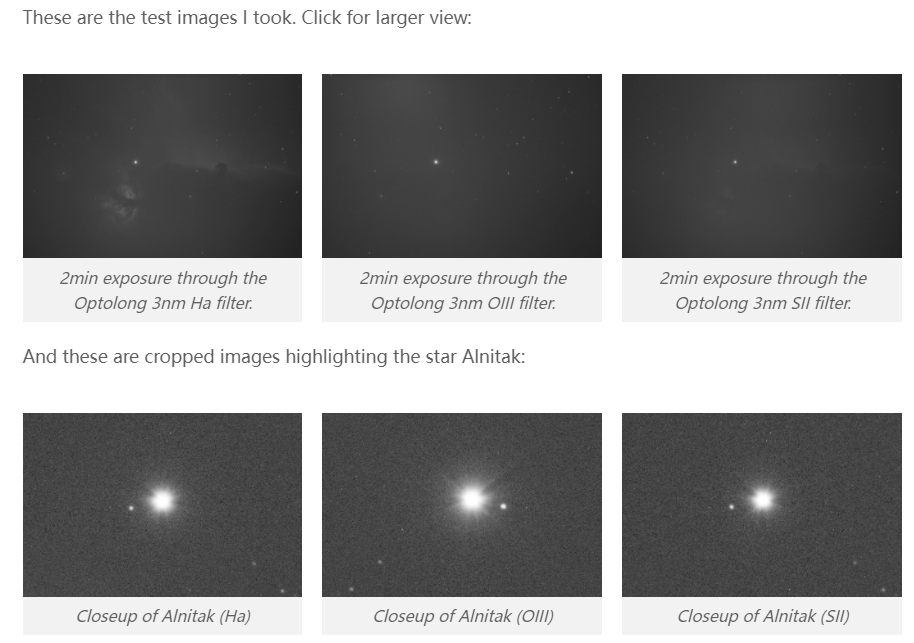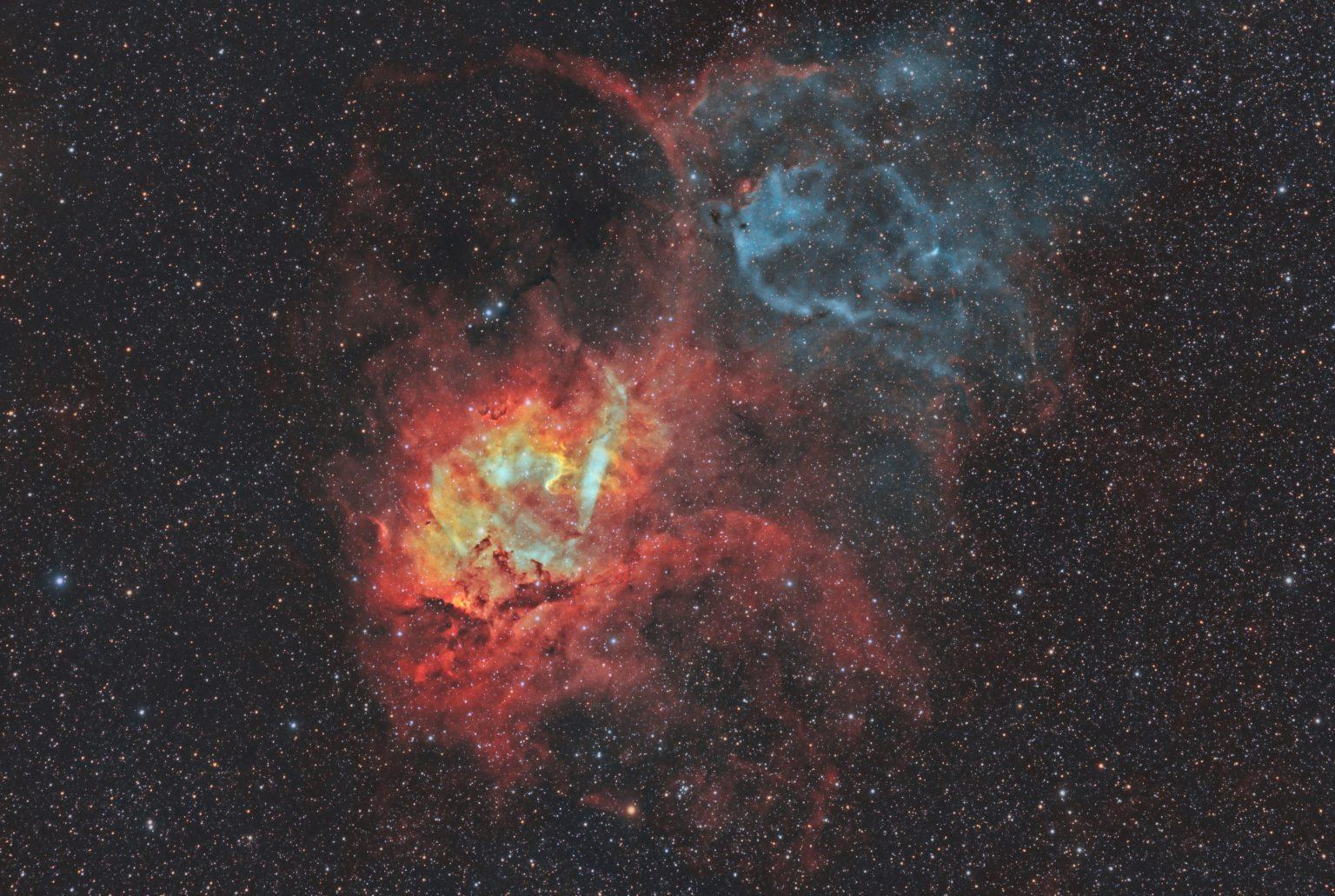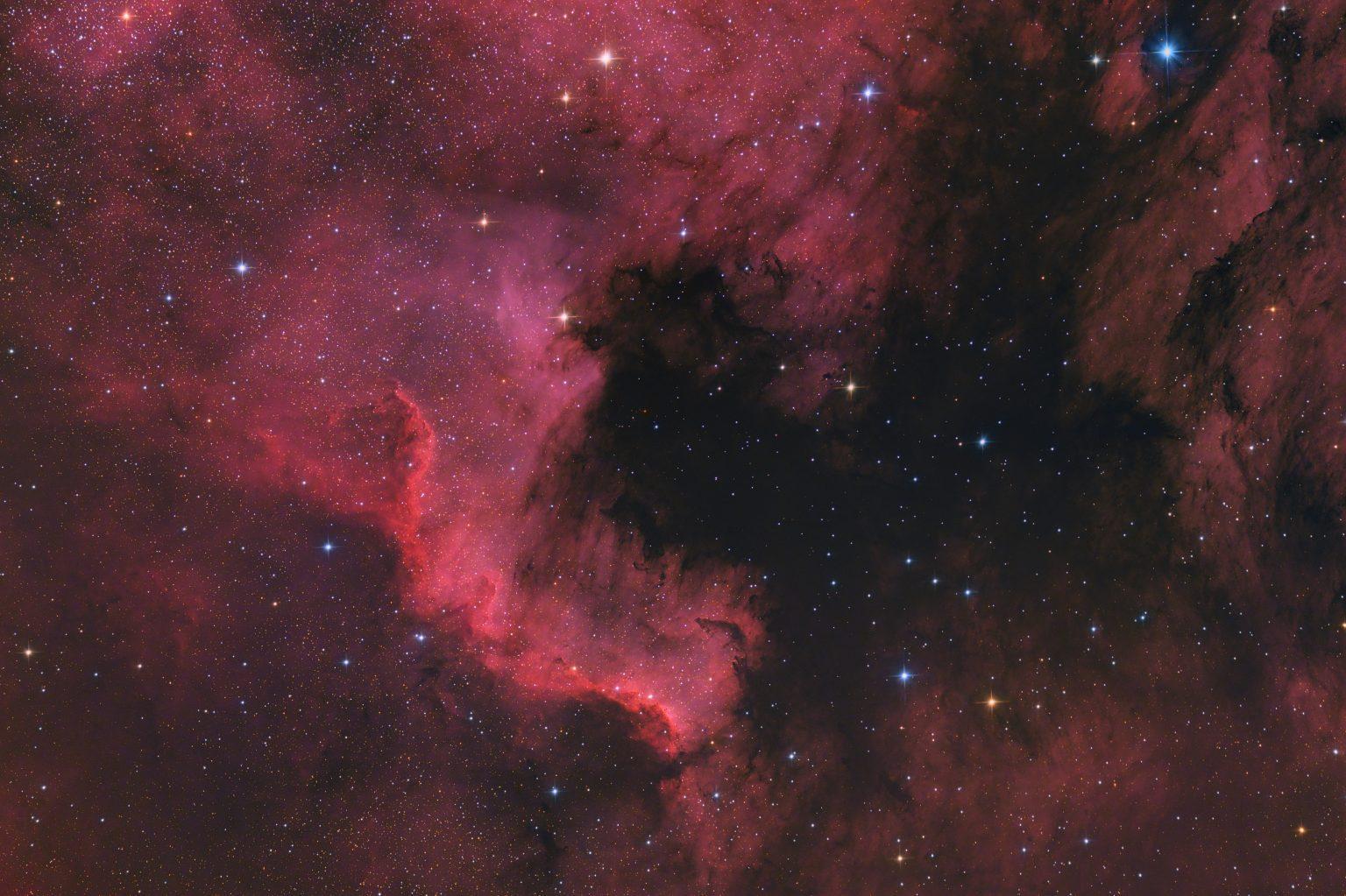Astrophotographer Shawn Nielsen is testing SHO-3nm
Astrophotographyer Shawn Nielsen is testing Optolong SHO-3nm 2" Type
M42
This is my first image of 2022 and also first image taken using the new Optolong 3nm filters.
I haven’t had much in the way of opportunity to image with them. The past 2 months or more, we’ve had mostly cloud and snow. There were only 2 clear nights and I tried to accomplish a little bit of everything (like also testing the new L-Ultimate filter).
I’ve used Optolong filters for the past 5 years now. They have performed well and are reasonably priced for the majority of backyard astrophotographers. Optolong sent me a set (Ha, OIII, SII) of their new 3nm filters and wanted me to try them out.
The advantage of 3nm filters vs the more common 7nm (or 6.5nm), is the bandpass is much narrower. This is good, especially for those backyard astro imagers dealing with light pollution. The 3nm filter will make sure that the data collected by the sensor is far more of the pure signal being emitted from the depths of space; and not unwanted photons such as light pollution from that street light or outside house light your neighbour likes to leave on while inside for the night.
For my first test images (below) and the image above, I used an Explore Scientific 127CF triplet refractor at F5.2, a QHY268M cool cmos camera and of course the Optolong 3nm filters.
One of the biggest issues facing backyard astrophotographers when it comes to filters is halos around bright stars. So I wanted to really test the Optolong 3nm filters performance with this in mind. I chose the star Alnitak in Orion which is associated with the infamous Horsehead and Flame Nebulae – a popular imaging target for astrophotographers. Alnitak is famous in the astrophotography community for having a severe halo around it in images taken of this region of space. Perhaps phrasing it, Alnitak exposes halo problems with filters very easily, is better.
So as I mentioned my main interest for these test shots of Alnitak were to see if there was any kind of halo appearing. Especially with the OIII filter which are notorious for halos. I was pleasantly surprised to see no halo at all with the Ha and SII filters and only a very slight hint of a halo in the OIII image. Really it was virtually halo free. That’s exactly what we want!
I plan to do more narrowband imaging with the Optolong 3nm filters, so stay tuned! Sign up for my newsletter and subscribe to my Youtube channel.
Are using or planning to purchase 3nm narrowband filters? Let me know your thoughts below in the comments!
Image Technical:
Explore Scientific 127CF Triplet Refractor (at F5.2)
QHY268M CMOS Camera, 26mp, 3.76um @ -10C
QHY CFW3-L 7 position
Optolong Ha-OIII-SII 3nm filters
Skywatcher EQ6 mount / Skyshed Pier
Pegasus Astro Focus Cube
NINA 1.11 (beta nightly build) for acquisition
Processed in PixInsight
Seeing and transparency: average to good
Location: Kitchener, Ontario, Canada
NGC 2264 (The Cone Nebula, Foxfur Nebula and Christmas tree cluster)
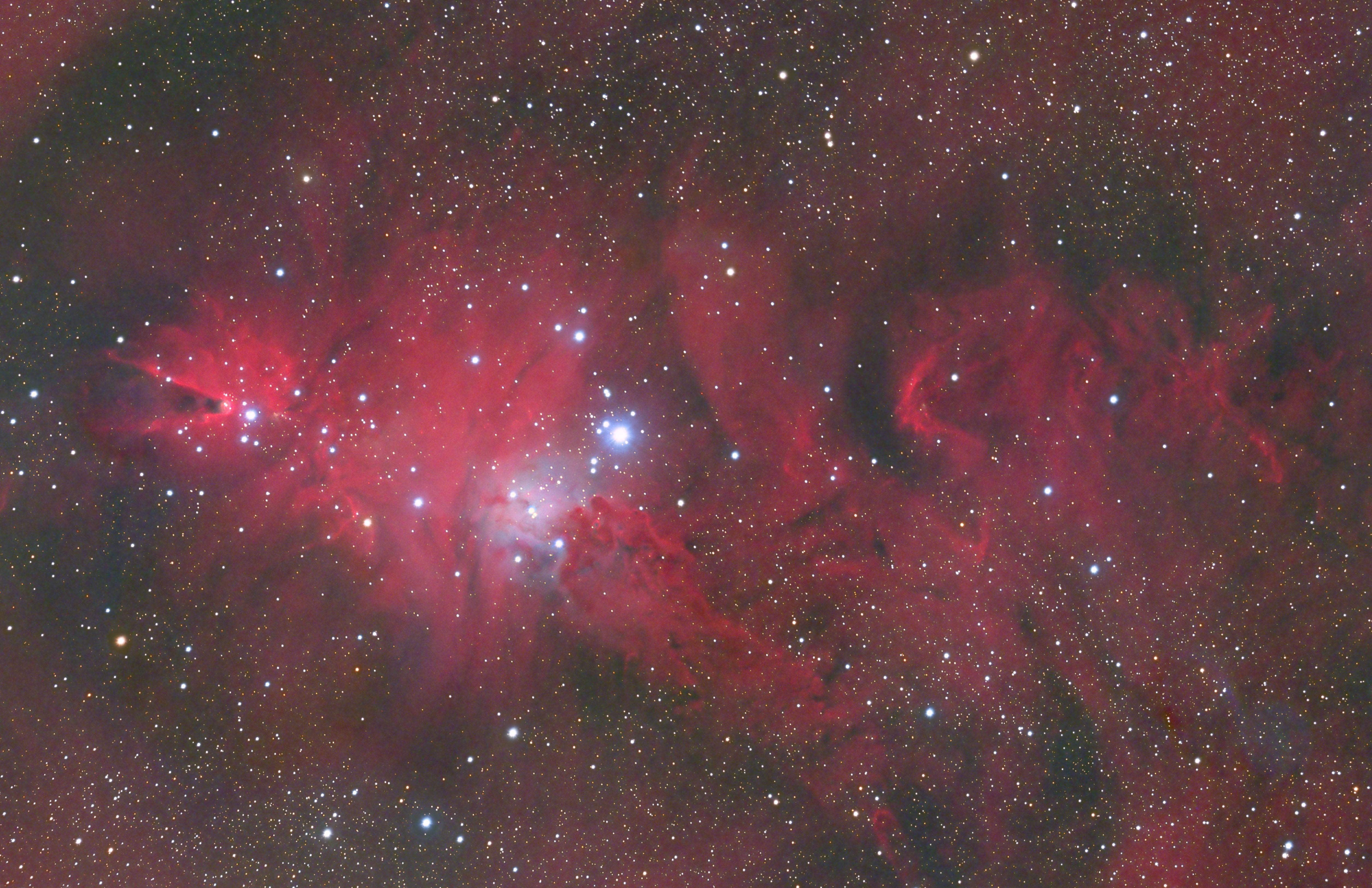
NGC 2264 (The Cone Nebula, Foxfur Nebula and Christmas tree cluster). Tough getting data on this. Limited window due to trees and very poor weather. Took 2 months, bit by bit. Only 8.5 hours total but not bad. Shot with Optolong RGB and the new Optolong 3nm Ha filters. QHY268M camera and Explore Scientific 127CF triplet. Processed in PixInsight. Imaged from the backyard!
The Lion Nebula Sh2-132
The Lion Nebula Sh2-132 is a weak emission nebula near the constellations of Cepheus and Lacerta. It’s thought to be between 10,000 and 12,000 light years away.
The main components of this emission nebula are hydrogen and oxygen gases, which are stimulated to a high energy state by ultra violet light from nearby stars and subsequently re-emit the light. The darker areas are “dark nebulae,” which are dust clouds that obscure light.
This image is a combination of narrowband wavelengths of light. A colour palette known as SHO (SII, Ha, OIII). The reddish areas are Ha and SII emissions and the blue is OIII.
I was happy to be informed that this image was selected as Picture of the Day by Astronomy Magazine for April 1, 2022.
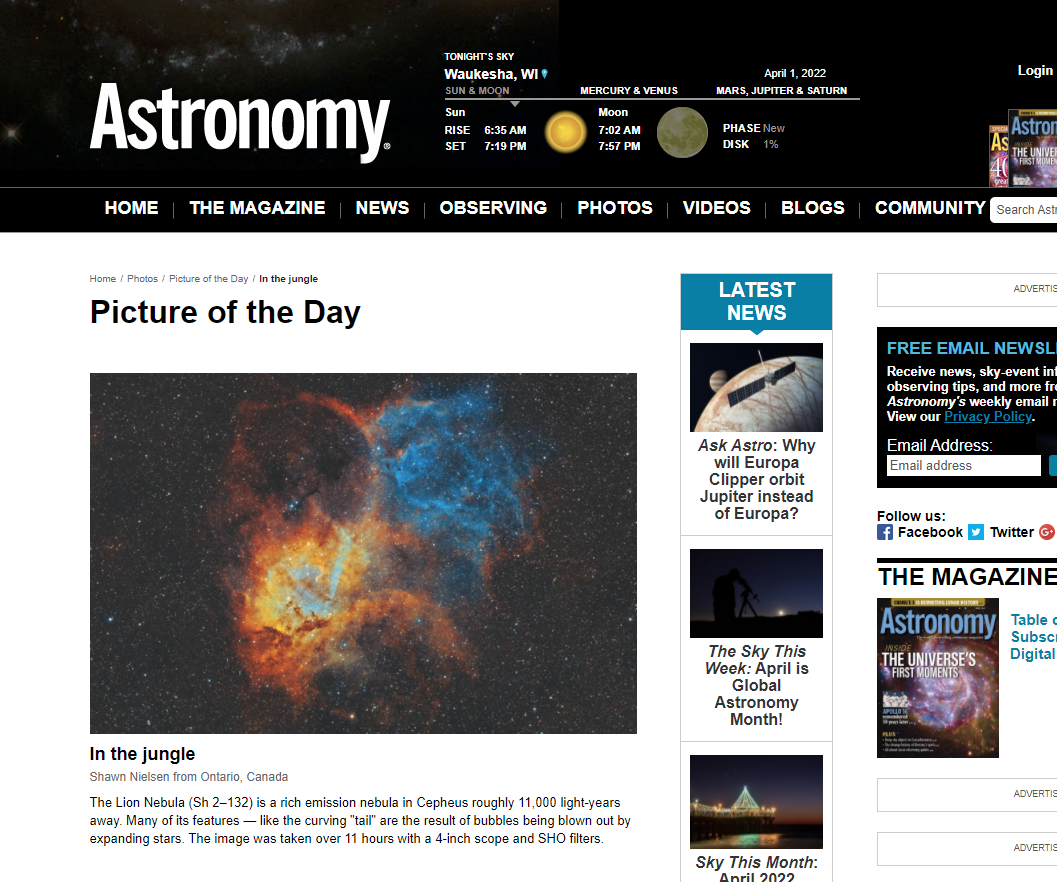
Image technical:
Skywatcher Esprit 100mm F5.5 Triplet Refractor
QHY268M CMOS Camera , 26mp, 3.76um @ -10C
QHY CFW3-L 7 position
Optolong Ha-OIII-SII filters
Skywatcher EQ6 mount / Skyshed Pier
Pegasus Astro Focus Cube (EAF)
NINA 1.11 (nightly build) for acquisition
Processed in PixInsight
Seeing and transparency: average to good
Total integration time: 11hr (5min subs)
Location: Kitchener, Ontario, Canada
Cygnus Wall with Starfield Optics Astrograph
This image focuses on the Cygnus Wall. The Cygnus Wall is a portion of a much larger nebula called the "North America Nebula" located around 2600 light years from Earth. The hydrogen clouds in these nebulas are lit by stars showering ionized radiation on them.
Processed in PixInsight. Imaged from my backyard.
The Elephant Trunk nebula
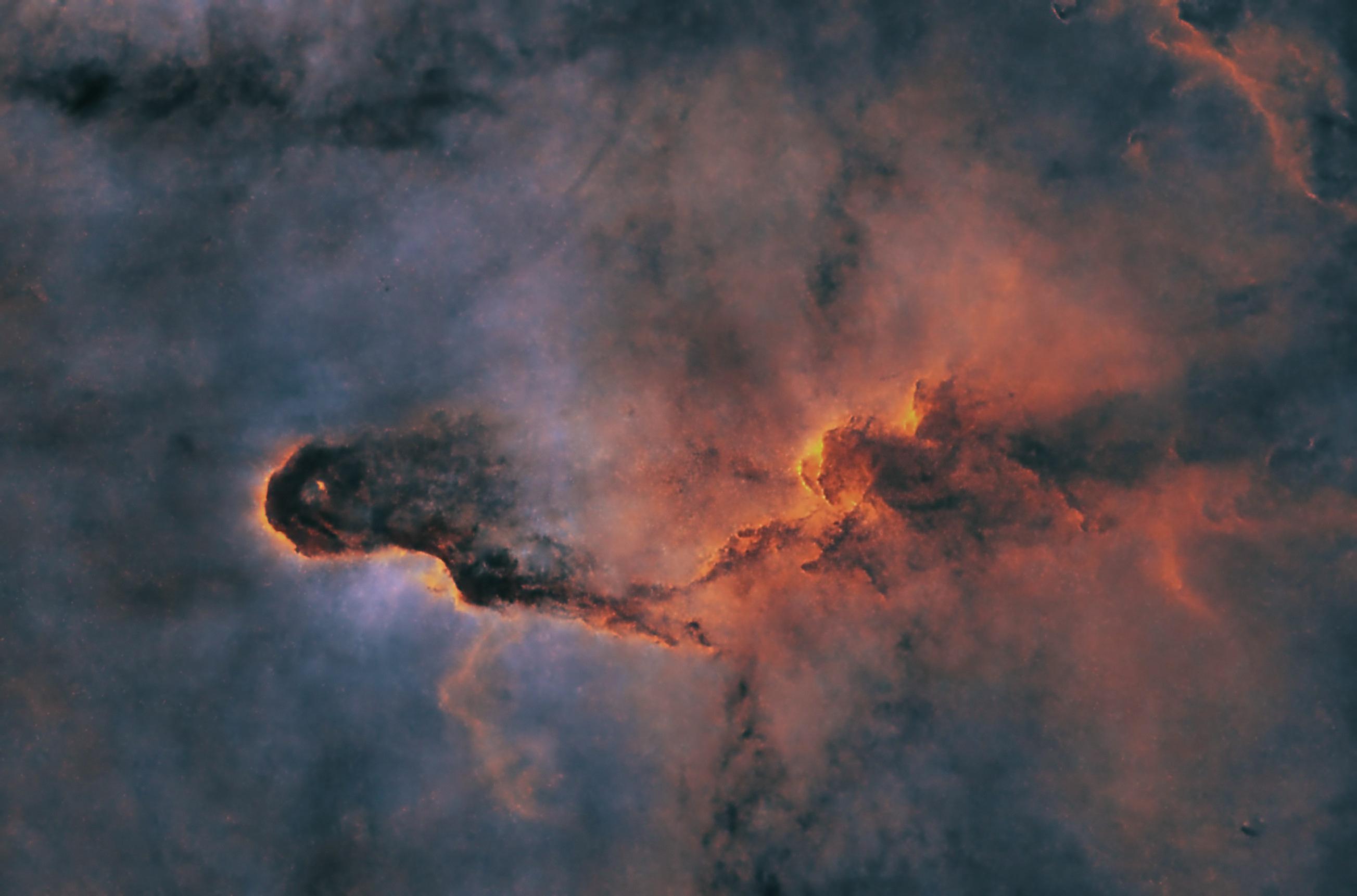
Summer nebula season is coming around again. In the constellation of Cepheus is the Elephant Trunk nebula. This nebula is about 2400 light years from Earth and is a concentration of interstellar gas and dust within the much larger ionized gas region IC 1396. I imaged this from the backyard using a Starfield Optics 8inch astrograph, QHY268m camera and Optolong 3nm narrowband filters. 5 hours total. Processed in PixInsight. This is a starless version which I quite like since you can see much more of the nebula details.
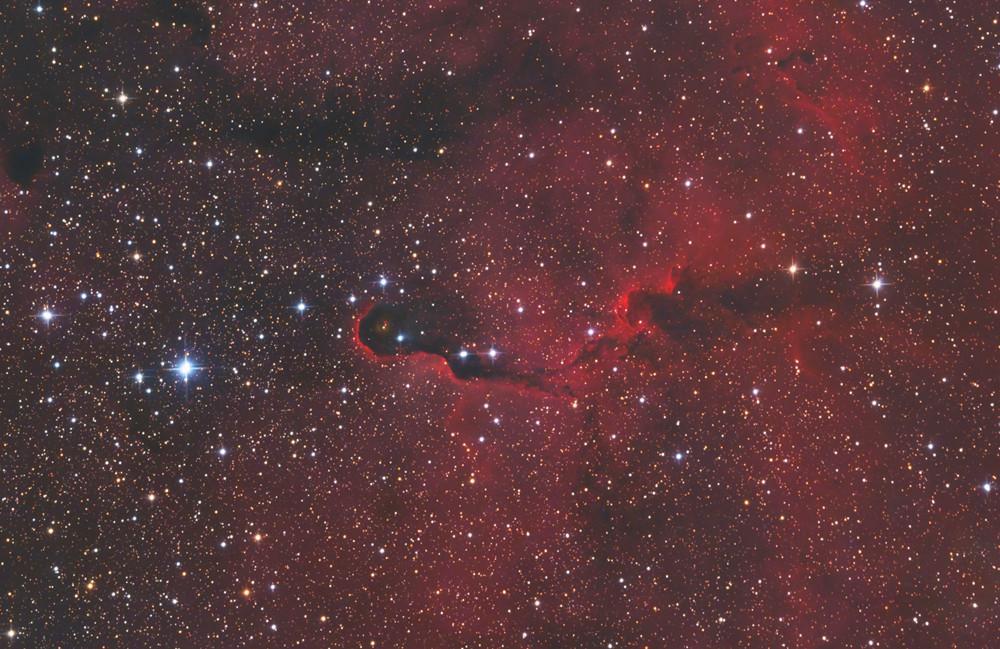
Elephant-Trunk-Optolong-3nm-Ha and RGB
NGC 1333 Nebula Star-forming Region in Perseus
In the constellation Perseus, NGC 1333 (also known as the Embryo Nebula) is a reflection nebula that is 1,000 lightyears away. Hundreds of stars as young as one million years old can be found in the nebula, which is located on the border of a large star-forming region in space.
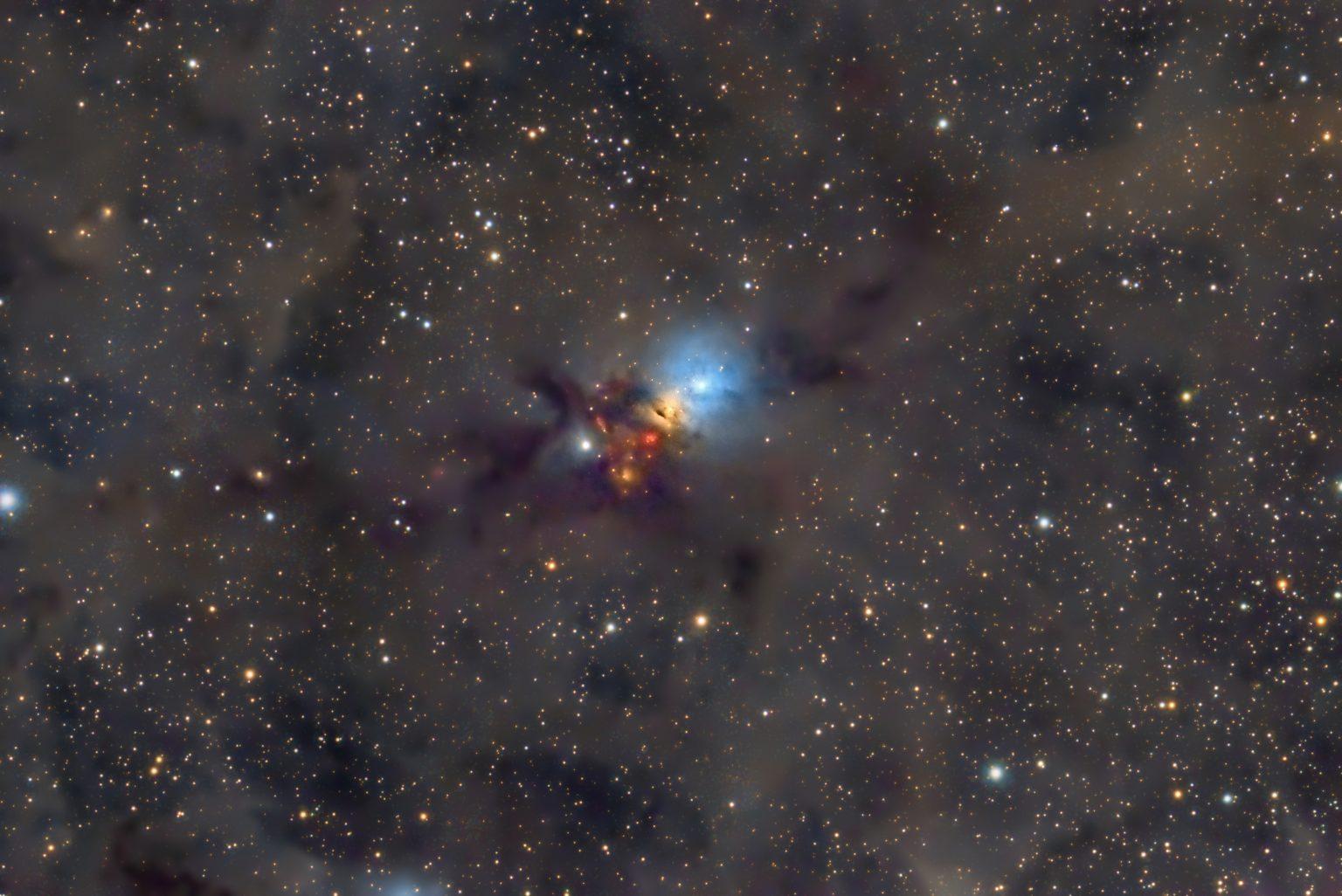
It’s a beautiful reflection nebula with an open star cluster nested in it. The dense dust clouds block much of the apparent light from the stars within it. Red jets and red-glowing gas are fueled by the light and winds of the newly born young stars. Despite its classification as a reflection nebula, this object is an active star-forming area.
The image above represents 13 hours of data collected using an Explore Scientific 127CF triplet refractor, QHY268M camera and Optolong L-R-G-B filters. Processing was performed in PixInsight.
Honoured to have my image of NGC 1333 published in the RASC (Royal Astronomical Society of Canada) JRASC magazine.
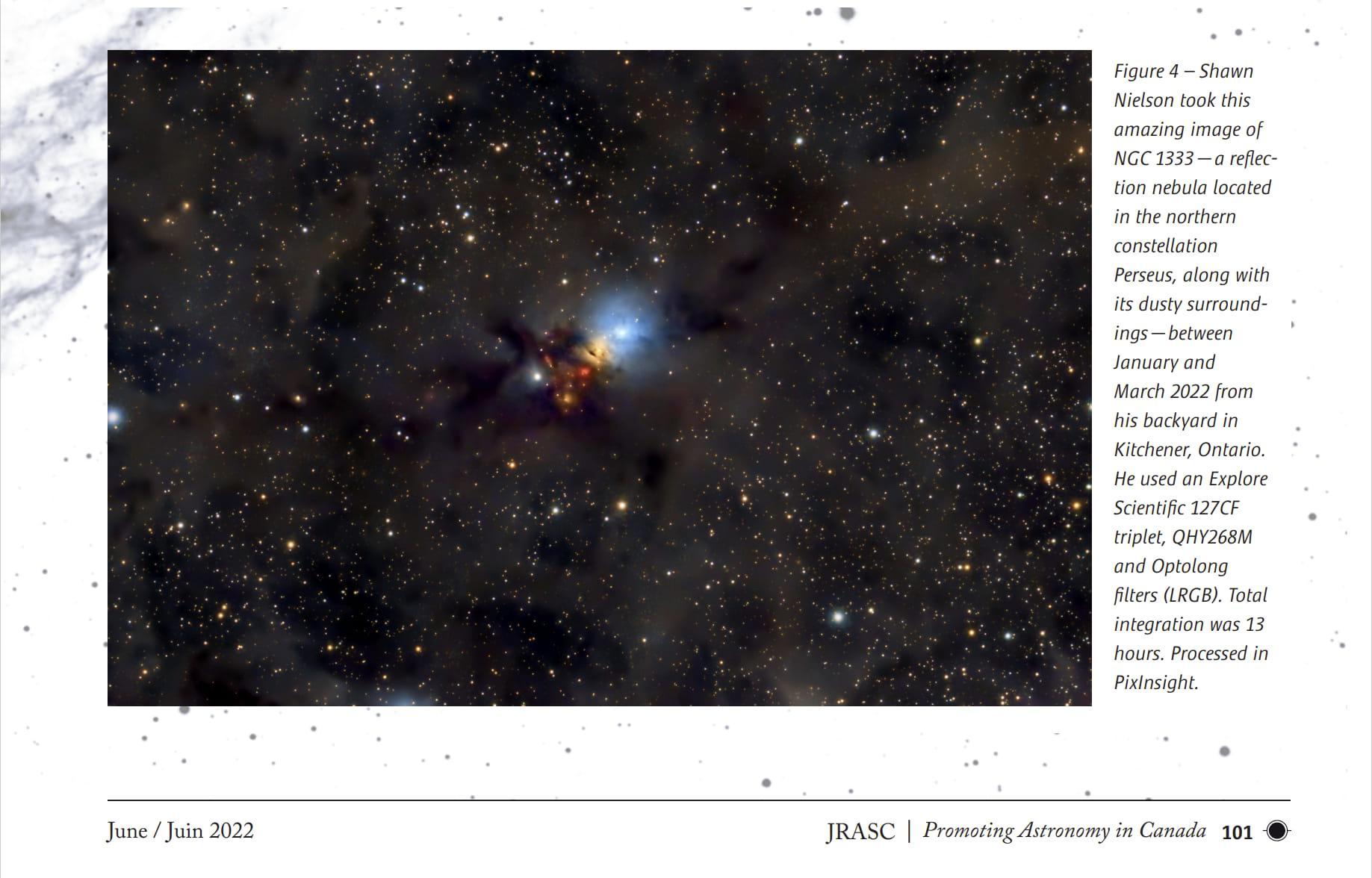
Hope you like it.
Thanks for your continue attention.

